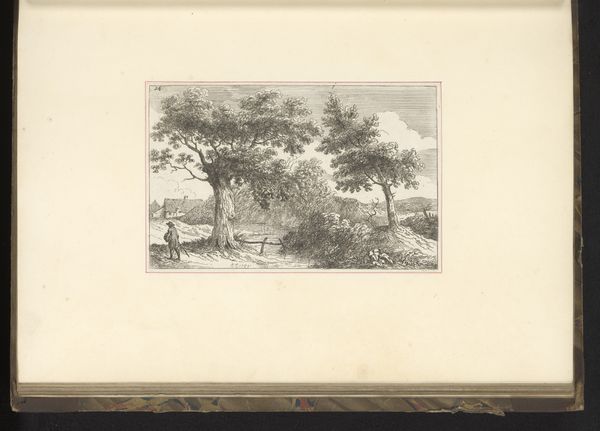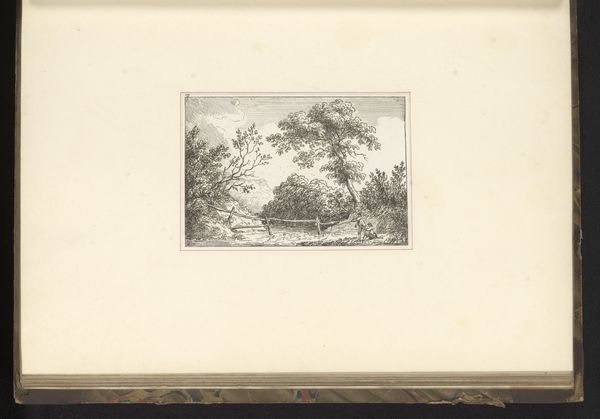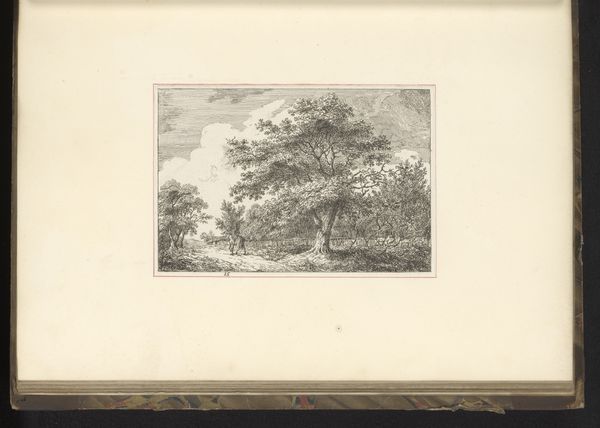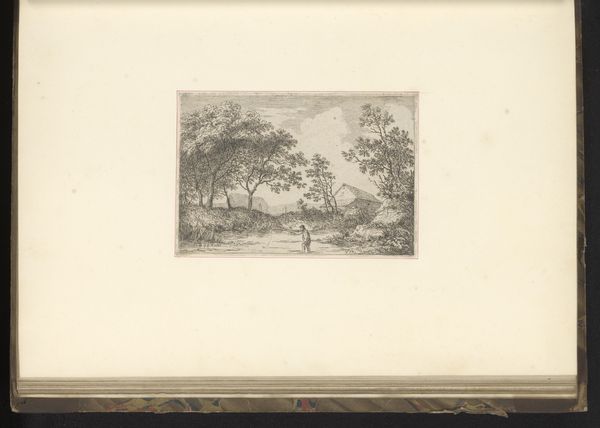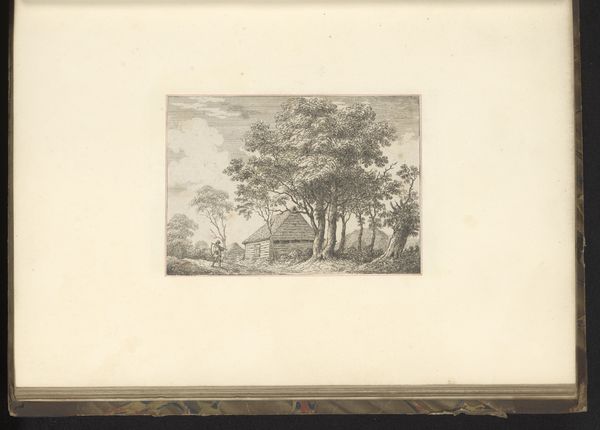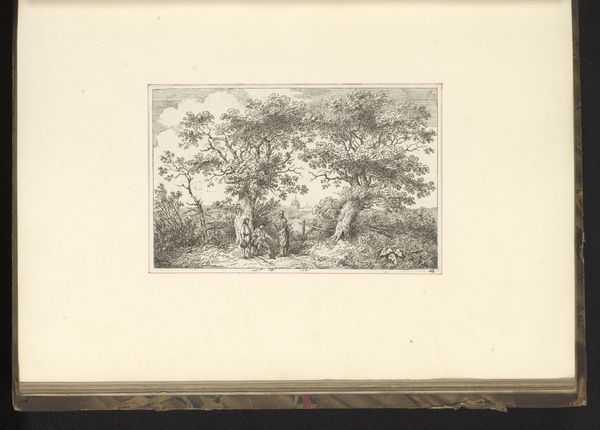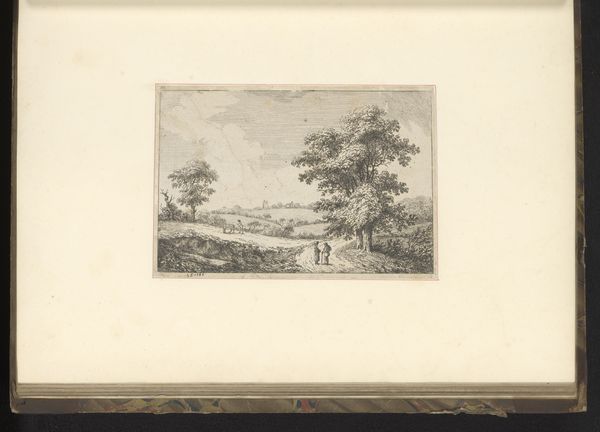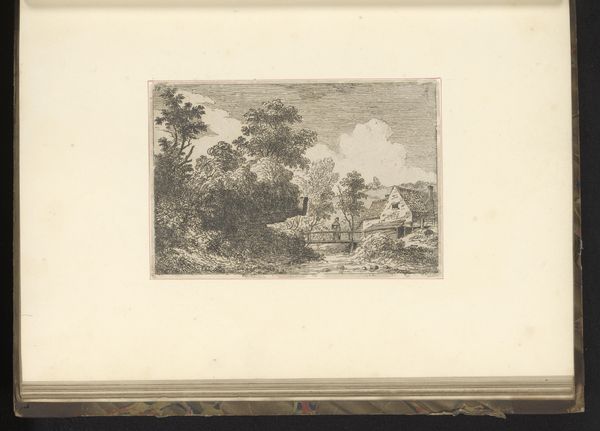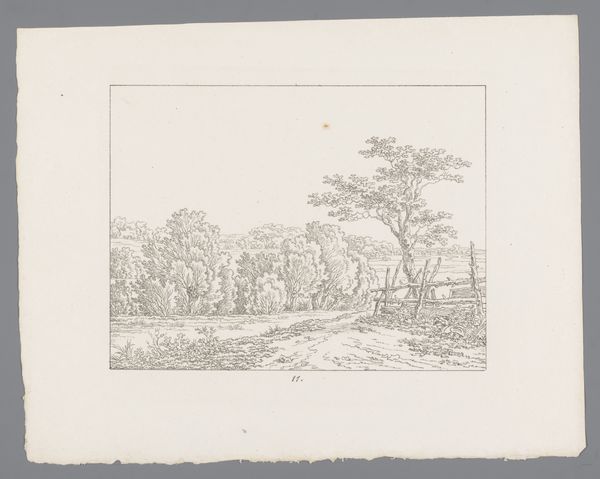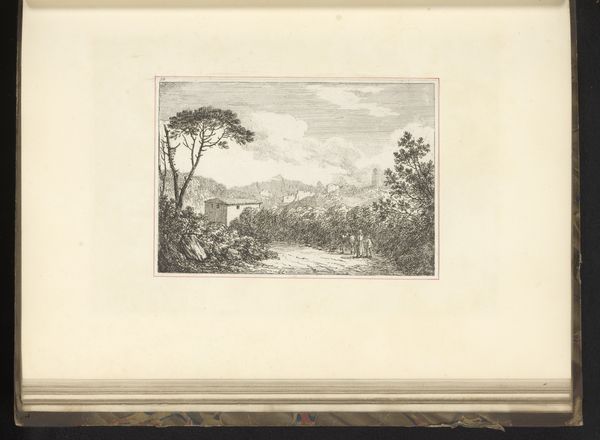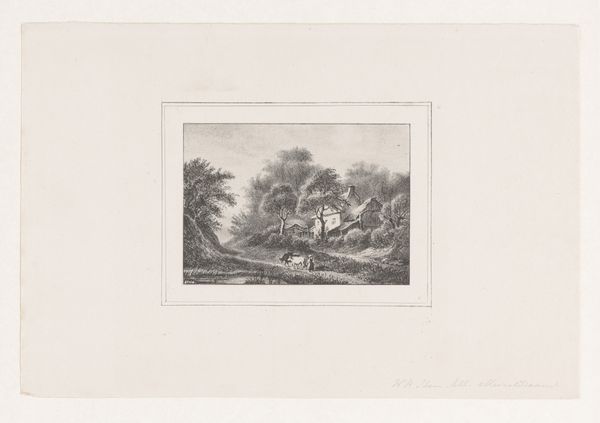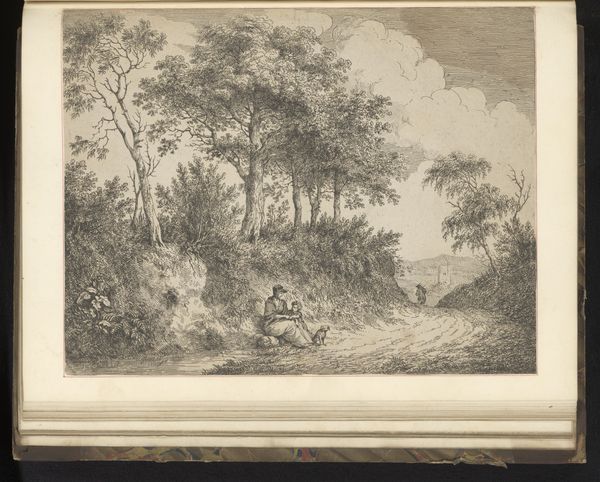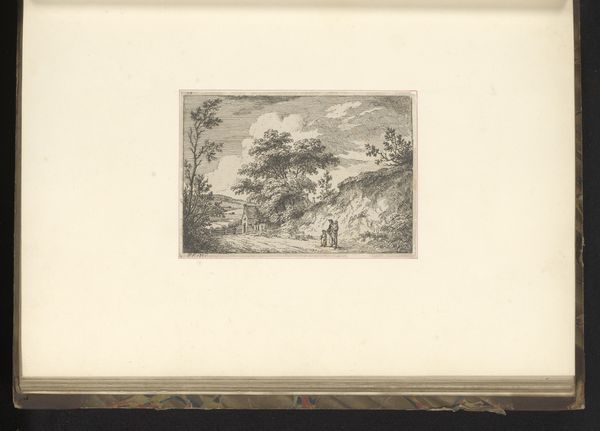
Dimensions: height 111 mm, width 149 mm
Copyright: Rijks Museum: Open Domain
Curator: Welcome. Before us is Edward Edwards' "Landschap met een wandelbrug," an etching and engraving held at the Rijksmuseum, dating roughly between 1748 and 1806. Editor: My first impression is one of tranquility. The monochromatic palette and delicate lines evoke a sense of calm, almost dreamlike stillness. The bridge presents itself as a connecting device of the overall composition. Curator: Indeed. Note the artist's skilled rendering of light and shadow, creating depth and texture, particularly within the foliage of the trees. Consider also the line quality; it varies in thickness to define shapes. The delicate, almost feathery lines used for the clouds contrast the thicker, more defined lines outlining the landscape. Editor: I see this not just as formal skill, but also located in its specific moment. Landscape art in the 18th century was tied to social changes: it reflects growing urbanism. As cities expanded, so did the longing for a seemingly simpler, more 'natural' rural existence. That tiny figure is proof of that. Curator: A figure almost overwhelmed by nature itself. Edwards masterfully utilizes perspective to draw the viewer's eye deeper into the composition. The bridge acts as a visual anchor, guiding the eye along a journey through the scene. The atmospheric perspective softens details in the background. Editor: Precisely! That small human traversing the bridge suggests a connection between humanity and nature, yes, but the scale emphasizes our relative insignificance within the larger world, highlighting themes often found in Romanticism. Did Edwards want to make the individual seem humbled when set against nature's scale and grandeur? Curator: A possible reading. What’s compelling is how Edwards employed engraving to bring out such fine detail in representing natural light. Look at the rendering of sky and reflections in water and see how, formally, the scene works—it captures a particular aesthetic appeal common within Romantic landscape art. Editor: It's a reminder that art doesn't exist in a vacuum; social currents profoundly impact artistic production and interpretation. This tiny print encapsulates a broad transformation underway, reflected in visual and cultural forms of its day. Curator: The genius of "Landschap met een wandelbrug" lies in its simple but refined technical construction. It rewards attentive examination of artistic expression, and that dialogue enriches our view. Editor: And by engaging its historical situation, we unlock deeper social and political layers, revealing connections between then and now in art's enduring power.
Comments
No comments
Be the first to comment and join the conversation on the ultimate creative platform.
